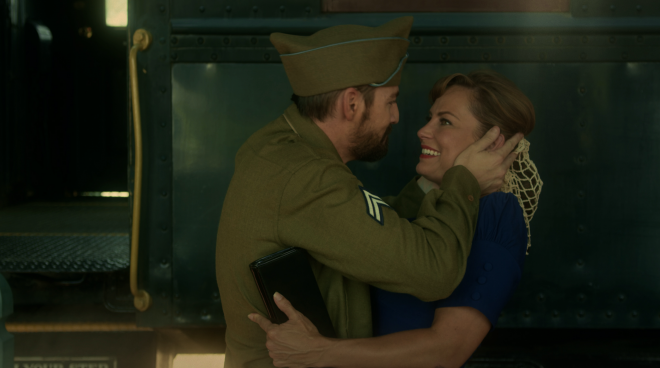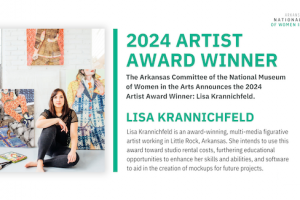REMAKING YESTERDAY TODAY

You don’t need a big budget to produce a historical film. Just some patience and a lot of ingenuity.
WORDS / KODY FORD
PHOTOS / KANDI COOK + AMBER LINDLEY
Because we still haven’t invented time travel, historical films are the closest you can get at the moment unless you’re into Renaissance Faires or Civil War reenactments. These movies have an epic grandeur to them. Juliet’s lament upon the balcony. Ben-Hur in a harrowing chariot race. William Wallace shouting, “Freedom!” They capture the imagination with their intricate costumes and elaborate sets, all of which seem a bit expensive. But you don’t need $100 million to make it happen. We spoke with several independent filmmakers who have made period pieces about how they crafted such a film on a smaller budget.
THE OLD WEST
For decades Westerns reigned supreme at the box office and on television sets. They told tales of bravery on the frontier, which appealed to a post war American sucking down Coca-colas and drag racing hot rods in their suburban enclaves. Now, in hindsight many of these films are seen as problematic revisionist history. But the appeal of Westerns still lives on today. While maintaining accuracy with details is still important, today’s filmmakers tend to provide different points of view that were overlooked in the past.
Amber Lindley has long had a soft spot for historical epics. As a teenger she gravitated towards Jane Austen novels and pursued the aisles at Blockbuster Video looking for historical romance films. One of her favorite films is Far and Away, the Ron Howard film that starred Tom Cruise and Nicole Kidman as Irish immigrants. The film faced criticism for both the production and themes as it revolved around the Land Run of 1893 in Oklahoma. However, the epic scale of the film touched her.
“When I saw Far and Away, it’s this huge, sweeping epic thing,” she said. “And it does have its problems, but sitting in the theater and watching that land race on the big screen, I had never experienced that before…When you’re in that moment with those boomers, what does that mean to our history? That scene was just so well done in Far and Away that it made the movie for me.”
Lindley’s love of days gone by led her to option the novel, The Mustanger and the Lady by the late Dusty Richards, of Springdale. While the novel had more of the John Wayne Western archetypes, Lindley saw another story that could be told with the material, one of female empowerment that would be more relevant to modern times. She developed the story with the character, Julie, as the lead, but her collaborators and investors just didn’t see her take as bankable. But soon Lindley found herself a powerful new ally when director James Cotten, who had just boarded the project, also expressed that Julie should be the lead.Their investors decided to let Lindley and Cotten give it a shot.
While Cotten meshed with Lindley on the vision for the story, he brought a level of experience that no one else involved with the film had—he’d actually directed a Western, the post Civil War film, Sugar Creek. He immediately talked the production team into narrowing the scope of the film to reduce the budget. So many extra costs are incurred when shooting a Western such as $70,000 insurance for the horses. Cotten convinced the team to learn from his mistakes on Sugar Creek. They did a rewrite on the script that, in Cotten’s words, reverse engineered the story to fit the budget. They kept the costumes. They kept the horses. They kept the guns. But they brought the movie in at $500,000.
They chose to film Painted Woman in Oklahoma because of the tax incentives at the time and the ability to access locations that fit the time period. He wrote several scenes that would allow them to film strictly within a museum that had once been the home of one of the state’s richest men. It had period appropriate furniture and was designed much in the way it had been over a hundred years ago. They found horse trainers who had their own wagons and costumes they could provide. They built multiple locations on the land that belonged to this crew. They filmed the early part of the film at night to shoot in locations that would have proved more problematic for blocking out modern life during the daylight.
“You need to be smart about what it is you’re planning to do,” Cotten said. “And one thing that a Western allows people to do that a modern movie doesn’t have are landscape shots, being out in the woods. Land without things on it is cheap to rent. Get your characters down to a small amount of characters, limit the costumes that they’re going to be in. Tell a story that is about the characters like having to traverse the landscape that is against them. And what happens in between the characters, design it down to its bare essentials of what the story should be, and then do whatever those bare essentials are to the best ability that you can. Bring a lot of production value inside of the camera work and the landscapes. And come up with interesting ways of how to get rid of the things that are expensive.”
Painted Woman came out looking far more expensive and expansive than its budget might have allowed with an unseasoned director at the helm. Lindley has since gone on to co-produce the documentary, The Western District, which tells the story of the judicial district in Fort Smith in the time before Judge Isaac Parker, aka “The Hanging Judge” and the rise of corruption under the newly-assigned head U.S. Marshal Logan Roots. Director Brandon Goldsmith had originally written this as a play, which gave him more freedom to fill in the gaps of the record as he wished; however, when they expanded to a documentary, he had to go out and find evidence to fill in the gaps, which took the story down somewhat different paths to a wild history he had not originally anticipated.
Lindley produced re-enactments with Zak Heald at Farm Studios outside of Bentonville with Goldsmith at the helm. They utilized some of Goldsmith’s scenes and costumes from the original play for scenes like a recreation of an 1800s Congressional Hearing room.
While most filmmakers are beholden to studios or investors, much of Goldsmith’s work was funded by the Fort Smith Historical Society. “With non-profit organizations, they don’t have lots of money and you’re getting something from them that it’s a bigger gift to them than it can be to other people,” he said. “I hold that with high regard to really make sure that I use their money well.”
AFTER THE WAR
“Blood on the Risers”—a short film co-written and directed by Caleb Fanning and produced by Blake Elder and Dan Robinson—tells the story of a soldier returning from World War II and the horrors he brings home with him through post-traumatic stress disorder. The Rockhill Studios’ film stars Chuck Mere’ and Cassie Self. It has won many awards over the last few months at festivals. Part of its appeal has been the eye for detail the production team maintains throughout the short.
“One of the biggest things for us was with the settings,” said Elder. “We kind of had this conversation about, you know, what can we use for our advantage in this region?” They pinpointed the Shiloh Museum, the [Arkansas-Missouri Railroad] train station and the Arkansas Air and Military Museum in Northwest Arkansas. Shiloh Museum has buildings that are 1940s accurate, but they’re equipped with modern conveniences such as electrical outlets and places for talent and crew. The Arkansas Air and Military Museum had planes and vehicles that dramatically enhanced production value. Their art department was able to access the locations to provide some finishing touches for authenticity.
Elder added, “I think it really came together. Being a history buff and liking World War II, we really dove in deep on the details of their insignia patches and things like their wardrobe and military items, and that was a blast.”
THE UNREMEMBERED EIGHTIES
Filmmaker Juli Jackson journeys back to the beginning of the 1980s in a location far from suburban shopping malls and other common tropes of the era. Her short film, “Delta,” is a 12-minute Southern Gothic drama set in rural Arkansas that mixes live action & animation to tell the story of the day ten-year-old Nick Francis met the Devil. The surrealist nature of the story and the mixed media approach set “Delta” apart from many period pieces. While 1980 is more contemporary than World War II or the late 1800s, Jackson still faced challenges trying to be diligent about production design.
“When you start looking for objects, clothing, vehicles, you spend a lot of time googling things like ‘1980s boys sneakers’ or ‘how fast does rust develop?’” Jackson said. “One thing I had to keep an eye on when location scouting were rice fields because most fields are precision-leveled now. This is really noticeable in rice because it means the majority of levees are completely straight. But when I was a kid in the 80s, a levee was never straight. They curved, making beautiful shapes in the landscape. So we had to make sure to shoot around all those perfectly straight levees out there.”
Jackson believes the story could have been set in a different time and still worked, but things would have had a very different feel. The animation comes from notes young Nick takes about animals and plants he sees on the farm. A modern day ten-year-old, in Jackson’s opinion, would use an app on his phone and that would change the animated sequence in the character’s imagination.
While some filmmakers might be daunted by the idea of shooting something even set only a few decades ago, Jackson was not dissuaded. She said, “I felt confident the story I wanted to tell could be managed on a budget, because there is a lot in Arkansas that just hasn’t changed if you know where to look. So keeping an eye out for those places and then researching everything you put on screen to make sure everything is accurate. It takes time but it’s also pretty magical to be able to get to a location and turn around 360 degrees, checking for modern anachronisms, and not finding any.”
For filmmakers looking to make their own historical shorts or features, the takeaway would be to find a balance between your budget and the story. Sometimes authenticity gets expensive so be mindful of the scope of things when writing. But one thing stands above all—story.
“We as writers and filmmakers have that power to negotiate what people see and how it’s perceived and how characters are or shown on screen,” Lindley said. “And I think a great responsibility for anybody that really wants to do a period piece is to stay focused on the story. But then, because you’ve chosen to do a period piece, you must be responsible for what you’re saying overall about that moment in time.”





Comments